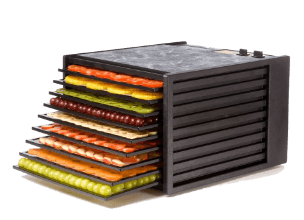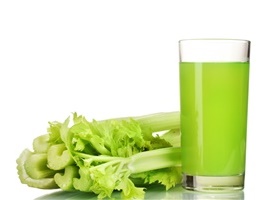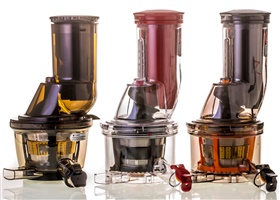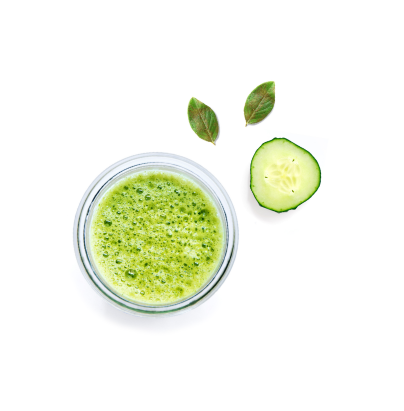Slow Juicer Vs Fast Juicer – Which Is Best?
 Does juicer speed really matter? Well, sort of but perhaps not in the way you might have been led to believe. Especially if you’ve read some of the marketing hype that we see masquerading as facts on some websites. We prefer to take a rational look at the relevance of juicer speed and make sure we don’t insult our customers with the kind of unsupportable fibs published on other juicer sites.
Does juicer speed really matter? Well, sort of but perhaps not in the way you might have been led to believe. Especially if you’ve read some of the marketing hype that we see masquerading as facts on some websites. We prefer to take a rational look at the relevance of juicer speed and make sure we don’t insult our customers with the kind of unsupportable fibs published on other juicer sites.
If enough people start repeating a seemingly plausible ‘fact’ about juicer speeds, pretty soon they have a following that has accepted the claim to be true.
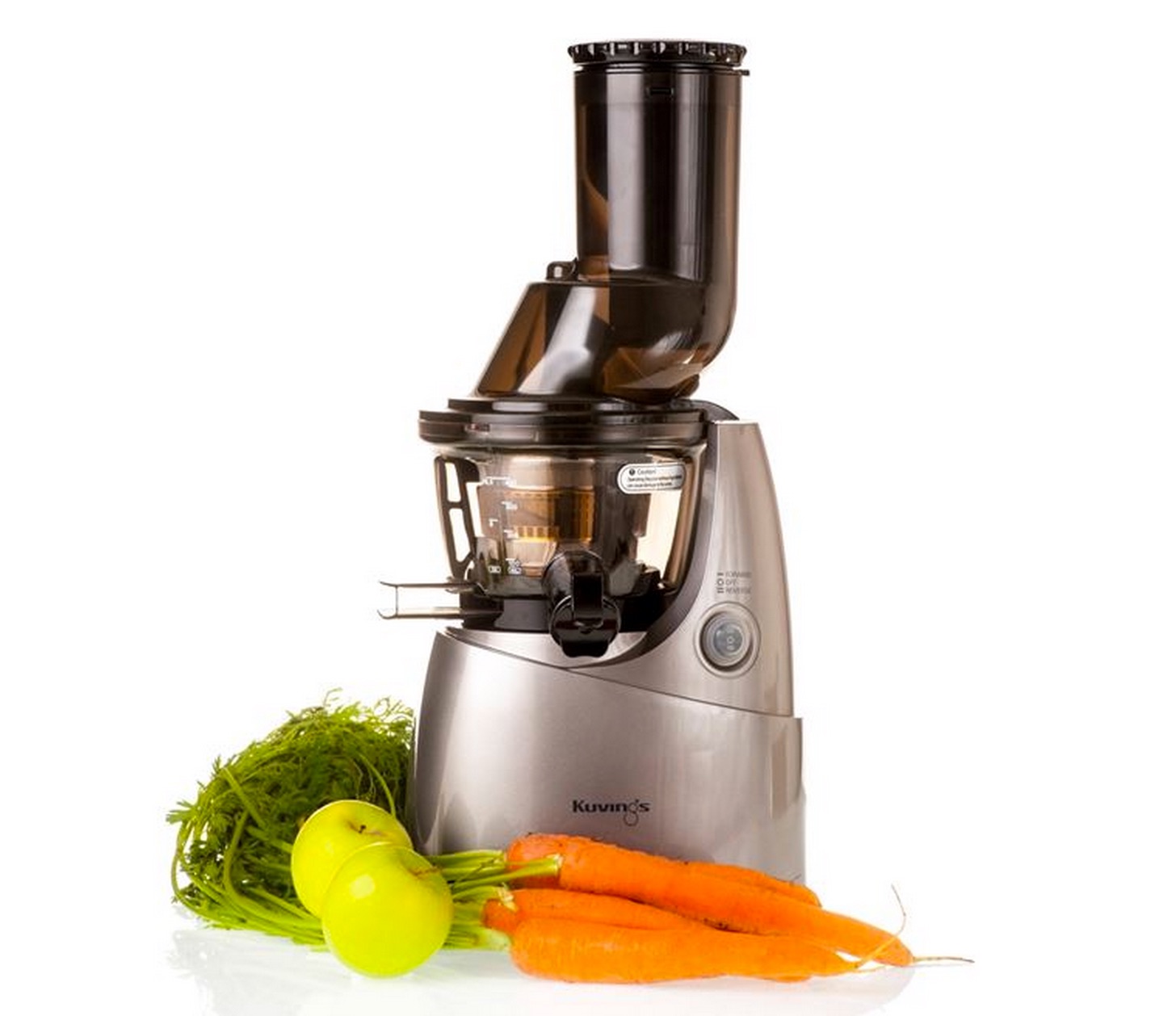 You might see other websites promoting vertical slow juicers implying that the lower the speed of the machine, the better the juice will be. Some try to convince you that a rotational speed of say 40RPM gives a more nutritious juice than a speed of 80RPM, while others are still propagating the fantasy that high speed centrifugal juicers destroy enzymes and other nutrients with heat and friction. Both of these concepts are misleading, with no scientific evidence to suggest that speed is such a big issue.
You might see other websites promoting vertical slow juicers implying that the lower the speed of the machine, the better the juice will be. Some try to convince you that a rotational speed of say 40RPM gives a more nutritious juice than a speed of 80RPM, while others are still propagating the fantasy that high speed centrifugal juicers destroy enzymes and other nutrients with heat and friction. Both of these concepts are misleading, with no scientific evidence to suggest that speed is such a big issue.
Some sellers will support claims with numbers like ‘70% more nutrition’ or ‘30% more juice’. These are meaningless statements unless they are qualified by evidence and comparisons that can be independently verified. Some claim to have carried out ‘independent’ comparisons when they have not. Some manufacturers who have jumped on the bandwagon making false claims about juicer speeds have already paid the price in out of court settlements, because they were unable to substantiate either their claims against high speed centrifugal juicer manufacturers.
So Are We Saying That Low Speed Juicers Are No Better Than Centrifugal Juicers?
No, we are definitely not saying that. But what is best for one person is not necessarily best for another and the differences are almost universally exaggerated by marketers. Juice yield and juice quality are important considerations for most people but when researching online it’s easy for them to become convinced that slow=better and fast=worse. It’s not that simple. The nutritional quality and yield of juice is determined by two factors – how well the plant fibres are broken down and how much force is used to separate the juice from the pulp. Yield varies between types of juicer on different ingredients. For example you wouldn’t want to juice berries in a centrifugal juicer because its too wasteful. But that same centrifugal juicer might outperform some masticating juicers for carrot juice yield.
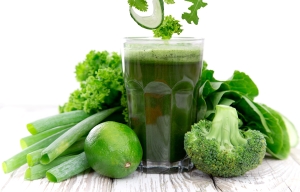
The juice quality is actually determined by the process and not the speed. Generally speaking, all masticating juicers are believed to offer more nutrients in the juice, because of the grinding and chewing action they have on the produce, which does a more thorough job of breaking down the plant cells and releasing the goodness. But the differences may not be as great as we are led to believe and it appears to vary from one ingredient to another. For some people the argument revolves around juice quality vs convenience and ease of use. Slow juicers offer excellent juice quality and they are good for juicing a wider range of produce. Centrifugals win for speed and convenience.
Slow juicers are slow because of the physical design limitations of the process by which they juice. Centrifugal juicers are fast because they need to spin the juice out through a filter with centrifugal force, which takes a lot of speed – from 3000RPM and upwards. Slow juicers are slow because they need to use a pressing force to get the juice through the filter without disintegrating in the process. A low speed induction motor is needed for that pressing force. The speed is simply a necessary aspect of the engineering in each case. The hype about nutritional content vs speed is a handy unique selling point, seized upon by manufacturers, but juicer speed is primarily a result of the mechanical limitations of the juicing process.
Juicer brands are mainly concerned with market share and sales, and because they can sometimes get away with making bizarre claims, suddenly we are getting hundreds of calls from people who want to know the exact speed of our juicers, believing that the slowest model will be the best. This just doesn’t work in practice. For example, Twin Gear Juicers are widely believed to offer the best quality juice you can get at home (unless you want to go to the extra trouble of using a hydraulic press as well). But the RPM of a twin gear juicer can be significantly faster than our slowest slow juicer. This completely contradicts the idea that slower = better since most people accept that a twin gear juicer will release more nutrients, even though it turns faster than many other low speed juicers. The better juice quality has nothing to do with speed in this case – quality is improved because the produce has to pass through tinier gaps between two stainless steel gears during the juicing process, achieving better breakdown of the cells. So we’d simply advise that the precise RPM is not as important as the juicing method itself, and different methods have different pros and cons.
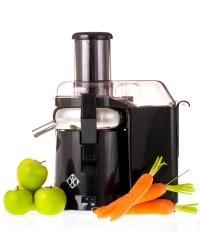 Centrifugal juicers are a fast way to get nutrients into your body and they are great if you have a busy lifestyle and your main priority is to get the job done quickly. Heat can destroy nutrients and the false claim most commonly made against centrifugal juicers is that they heat up juice and destroy nutrients. THEY CATEGORICALLY DO NOT DO THIS. Their speed doesn’t create significant warming and there is good evidence that they produce highly nutritious juice with good enzyme activity.
Centrifugal juicers are a fast way to get nutrients into your body and they are great if you have a busy lifestyle and your main priority is to get the job done quickly. Heat can destroy nutrients and the false claim most commonly made against centrifugal juicers is that they heat up juice and destroy nutrients. THEY CATEGORICALLY DO NOT DO THIS. Their speed doesn’t create significant warming and there is good evidence that they produce highly nutritious juice with good enzyme activity.
One thing that centrifugal models don’t do quite as well as masticating juicers (all slow juicers are also masticating juicers) is achieve a more efficient breakdown of the plant fibres. In a masticating juicer the fibres and cells are chewed or ‘masticated’ together under pressure, which is believed to help in releasing more of the ‘sticky’ nutrients in the plant cells and membranes. In a centrifugal juicer the cell walls are broken open very quickly with sharp high speed blades and the liquid content is released by the centrifugal force of a fast spinning filter basket. There is very little time or opportunity for the cells to be broken down completely, so the juice is visibly a bit less rich and colourful from a centrifugal. Centrifugals also incorporate air, so the juice will discolour more quickly due to oxidation. That’s not a problem if you are drinking your juice when you make it, but slow juicers do give a longer shelf life.
It’s clear that centrifugal juicers give a highly nutritious juice. Claims made online often wildly exaggerate the difference in quality between a centrifugal and a masticating juicer but the limited research available doesn’t support such claims. There is a difference, but depending on the nutrient tested, the percentages of difference can drop into low single figures. Juice yield from a centrifugal juicer is comparable with masticating juicers on most hard ingredients, but they do give significantly less juice with leafy greens, wheatgrass and soft juicy fruits. Nevertheless, a centrifugal juicer with a large feed chute and a powerful motor will be easier to live with compared to some masticating juicers, and the speed and convenience can be a good pay off compared to a small loss of juice quality. The more you actually use your juicer – the more you will benefit.
Some Slow Juicers Are Really Quite Fast!
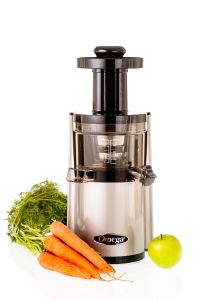 We would still say that vertical slow juicers are a better choice for anyone who has the budget to purchase a good model. Prior to the format becoming available, there was a significant gap between ease of use of a high speed centrifugal compared to most types of masticating juicer.
We would still say that vertical slow juicers are a better choice for anyone who has the budget to purchase a good model. Prior to the format becoming available, there was a significant gap between ease of use of a high speed centrifugal compared to most types of masticating juicer.
Masticating juicers used to be primarily the domain of the committed juicing enthusiast, usually with consumers upgrading to one of these after they have already been introduced to the benefits of juicing with a centrifugal model. Slow juicers have reduced the convenience gap with centrifugals dramatically. If you are already into the juicing lifestyle, a little more time spent with a slow juicer is a small price to pay to get better results, and the ease of use of these newer vertical slow juicers means there’s actually very little loss of convenience when you upgrade from a centrifugal. Although the rotational speed is low, the powerful cold press action of the large juicing augers in these machines means that for each low speed revolution, you process more ingredients than with the more traditional horizontal slow juicers. Horizontal auger juicers require a bit more patience, twin gear juicers even more so, with the latter being used by highly motivated people, and those using juices for health problems, where maximum nutrition is a priority.
If you put soft berries through a centrifugal juicer, much of the juice will still be in the ejected pulp, making these ingredients very expensive to juice in a high speed juicer. Also, leafy greens like spinach and wheatgrass can’t be juiced very successfully in a centrifugal and once the benefit of these ingredients is understood, many people want to juice them more often. Vertical slow juicers offer great performance across the widest range of ingredients.
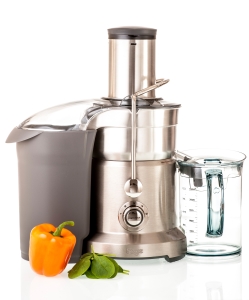
If you have a really busy lifestyle and want the juicing done fast, you are more likely to get the benefits of juicing with a high speed centrifugal model, because you will perceive it as less of a chore and be more likely to do it regularly. If you are more keen to prioritise juice quality and want to juice a wider range of ingredients successfully, then the 5 or 10 minutes it will take using a vertical slow juicer won’t seem like a problem.
We love slow juicers – we just want our customers to be correctly informed about the true importance of speed! So if you are considering your choices, we’d advise that you don’t get hung up about whether it does 40, 50 or 100 RPM. Slow juicers are all slow enough to get the job done well!
Please be aware though of the large range of cheaper Chinese slow juicers that are flooding the market. We’ve been sent samples ourselves by many Chinese manufacturers who were hopeful that we would include their models in our range. Some are direct knock offs of leading brand models, with lower quality manufacturing standards and poorer performance. Some just don’t work well at all. We advise making a good investment at the start with a well-established brand or manufacturer.
 Register / Login
Register / Login 





